The main events of 2013 of the year in astronautics
Roscosmos reform and the new head of the agency
Vladimir Popovkin, who headed Roscosmos since October 2011, replaced Oleg Ostapenko, who was appointed to this post in October 2013. After the appointment of Ostapenko, Roskosmos departed Alexander Lopatin, deputy head of the agency, first deputy head of Roskosmos, Oleg Frolov, and also Anna Vedischeva, who held the post of press secretary Popovkin. In addition, according to media reports, the new head of Roscosmos dismissed Nikolai Vaganov, who served as deputy director of the Center for the Operation of Ground and Space Infrastructure (TsENKI).
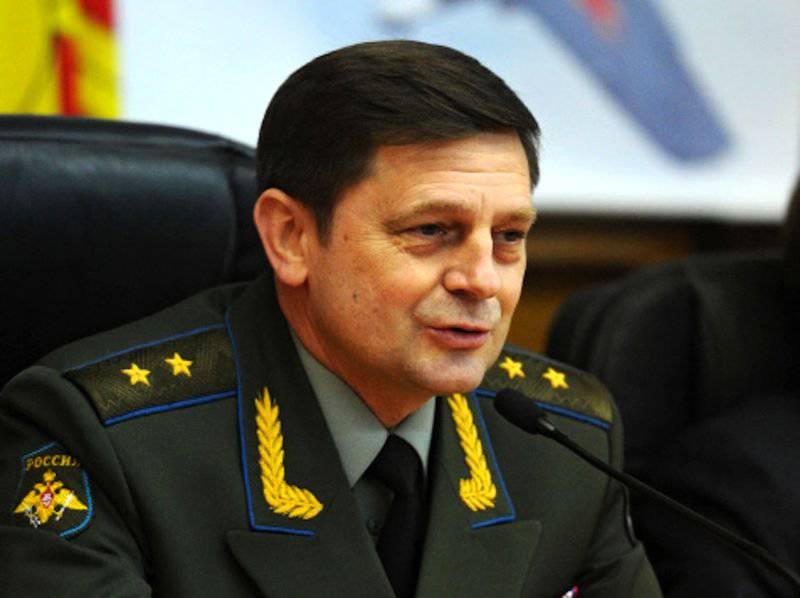
New head of Roscosmos Oleg Ostapenko
Oleg Ostapenko chose Igor Komarov, who had previously served as president of AvtoVAZ, as his deputy. It is reported that in the future, Igor Komarov may head the ORKK. The order for the establishment of an Orlava Conservatory was signed by Russian President Vladimir Putin at the beginning of December 2013. The announced reform assumes the formation of the United Rocket and Space Corporation, it is planned to create it on the basis of the JSC "Research Institute of Space Instrument Making". It is assumed that the structure of the new corporation will include all enterprises of the space industry, while the organizations of the ground infrastructure and branch scientific institutes will remain as part of Roskosmos. In addition, Roscosmos will retain the status of a state customer in the rocket and space industry. Before the formation of the ORCC, the state will have to bring the stake in OAO NII KP to 100%. After that, according to the presidential decree, the shares of space enterprises will be transferred to the authorized capital of ORKK, some of which will have to be converted into joint stock companies. 2 is assigned to all these conversions.
The first flight of astronauts on the ISS, conducted according to the “short” scheme
29 March 2013, the first flight to the International Space Station was made using a “short” pattern. The flight was carried out in 6 hours, until this point all manned "Unions" flew to the ISS in a two-day scheme. Prior to this, the “short circuit” was successfully worked out during the flights of Progress cargo ships to the ISS. Currently, all astronaut launches to the ISS are carried out precisely according to the “short” scheme.
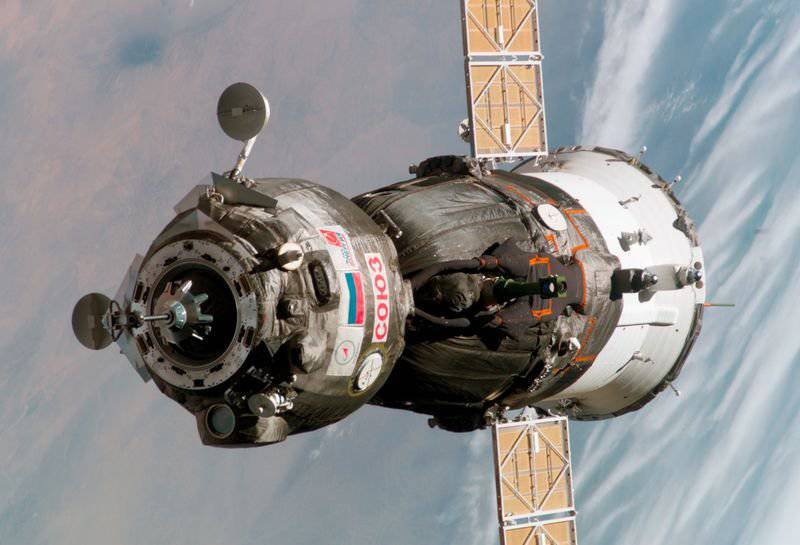
Such an astronaut delivery scheme has its advantages. The cosmonauts themselves note that the implementation of the flight according to the “short” scheme does not allow the astronauts aboard the Soyuz TMA spacecraft to immediately feel weightless, this is an advantage of the launch, as it provides a greater level of physical comfort for the astronauts. Even more obvious advantage is the reduction of the time of delivery to the station of various scientific objects, for example, various biological products, which is of great importance for scientists and science in general.
Olympic flame has been in space
For the first time in stories Olympic torch traveled to space. The symbol of the Olympiad, unlit for the sake of safety, was delivered onboard the International Space Station aboard the Soyuz TMA-11M manned spacecraft. This ship delivered to the station Russian cosmonaut Mikhail Tyurin, Japanese astronaut Koichi Vikatu and NASA astronaut Richard Mastrakkio. It was the Russian cosmonaut who brought the torch to the ISS. Inside the station, a kind of Olympic torch relay took place, the torch was carried through to all the internal space of the ISS by its crew. Later, Russian cosmonauts Sergei Ryazantsev and Oleg Kotov for the first time carried the torch into open space, where they held a kind of relay stage, transferring the Olympics symbol to each other and videotaping the process. Oleg Kotov, in particular, greeted the inhabitants of the Earth, waving a torch, and noting that from space a great view of our planet opens.
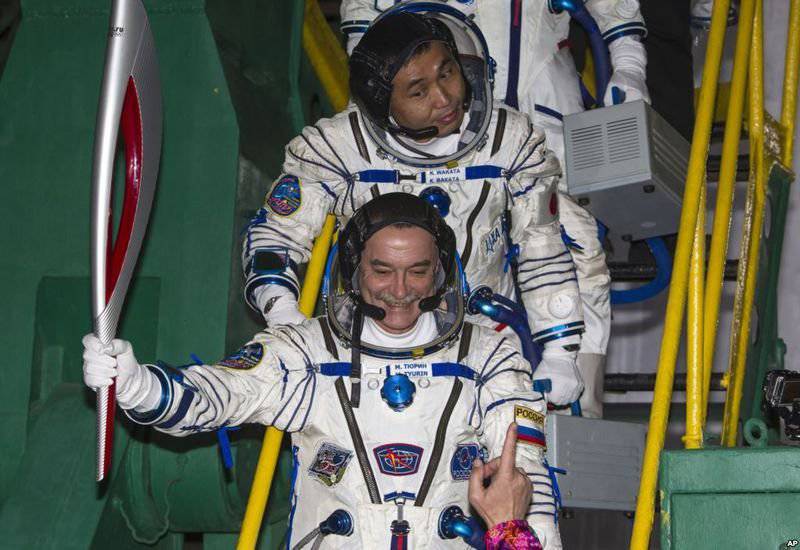
Another space crash
1 February 2013, the launch of the Zenit-3SL launch vehicle with Intelsat-27 satellite aboard ended with an accident. The launch was carried out under the Sea Launch program. Launch vehicle and satellite fell in the Pacific. The cause of the accident was the failure of the onboard power source, which is produced in Ukraine. A much greater resonance in our country was caused by the unsuccessful launch of the Proton-M launch vehicle with three Glonass-M navigation satellites on board. The launch was broadcast live on Russian federal channels. 2 July 2013, the Proton-M rocket fell on the territory of the Baikonur cosmodrome - already at the very first minute of launch. To investigate the accident Roskosmos created a special commission.
As a result of the investigation, members of the commission determined that the accidental cause of the Proton-M rocket was the abnormal operation of three of the six angular velocity sensors at once. The release of these sensors is engaged in the Federal State Unitary Enterprise "Scientific Production Center for Automation and Instrumentation named after Academician Pilyugin", while the sensors were installed on the "Proton-M" directly at the Center. Khrunichev (manufacturer of rockets). According to the information of the emergency commission, those angular velocity sensors that did not work correctly, just before launch, passed all the tests without recording comments. After this accident, a system of film and photo documentation was introduced at all enterprises of the rocket and space industry in Russia, which should track all the processes of assembling products. Organizational conclusions were made. The deputy director for quality of the center Khrunicheva Alexander Kobzar, the head of the technical control department Mikhail Lebedev, as well as the head of the final assembly department Valery Grekov lost their posts.
Cygnus made the first flight to the ISS
18 September 2013, the cargo spacecraft Cygnus, created by the American company Orbital Sciences, was successfully launched into space from the Wallops space center and headed for the ISS. Cygnus ("Swan") - this is the second commercial cargo ship created in the USA that makes flights to the ISS. NASA television broadcast the launch live. The cargo ship Cygnus delivered to the ISS about 700 kg of various cargoes, including water, food, clothing and other useful materials. In its first flight, the cargo ship took only 1 / 3 from its maximum carrying capacity. The Swan was docked to the station for about a month, after which the ship was loaded with debris and undocked from the station, after some time it entered the dense layers of the earth's atmosphere and burned.
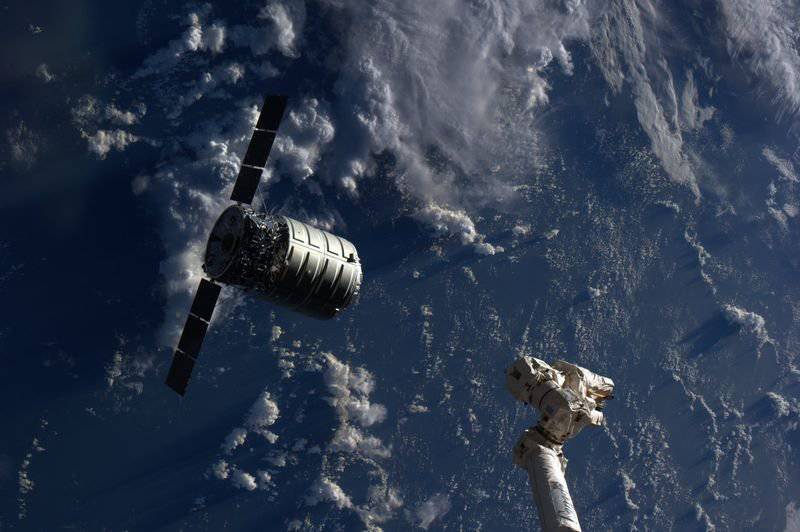
Cygnus cargo spacecraft
Currently, NASA has already signed a contract with Orbital Sciences for a total of 1,9 billion dollars. In accordance with this agreement, it is planned to carry out 2016 flights of the spacecraft Cygnus to the ISS by the end of 8. It is planned that during this time about 10 tons of various payloads will be delivered to the ISS.
Manned spacecraft private companies
Currently, the US space agency is implementing a program in which private companies can offer their own projects to deliver astronauts to orbit. It is assumed that the first manned launch will take place in 2017 year. This program involves the creation of ships for the delivery and return of astronauts to Earth (low earth orbit and back), as well as the development of a new generation of rockets. Currently, Sierra Nevada, SpaceX and Boeing are developing their own manned spacecraft under this program.
South Korea launched its first satellite into space
In 2013, South Korea joined the space powers and became the 13 country in the world, which managed to launch an artificial Earth satellite into space from its territory. The Republic of Korea has a space grouping that numbers several dozen satellites, but all of them were launched into space with the use of foreign launch vehicles. 30 On January 2013, the KSLV-1 rocket was launched, the rocket was launched from the territory of the Naro space center, which is located in 485 km south of the Korean capital.
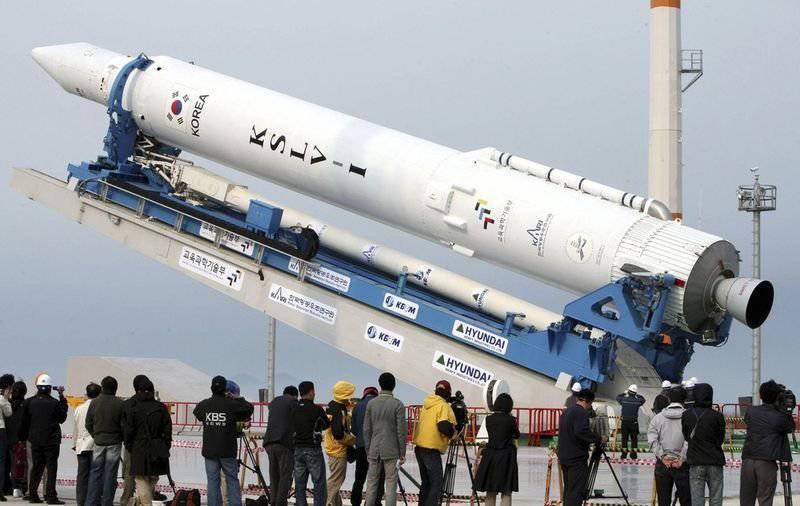
The launch would not take place without Russian help. Back in 2004, South Korea and Russia signed a contract to develop a lightweight class KSLV-1 launch vehicle. From the Russian side, the Center named after him. Khrunichev (development of the complex as a whole), NPO Energomash (the creator and manufacturers of first-stage engines), and the Transport Engineering Design Bureau (creation of a ground-based complex). From the Korean side, the Korean Aerospace Research Institute - KARI participated in the project.
China launched its first lunar rover
At the beginning of December 2013, China sent its first moonwalker, “Yuytu” (the Jade hare), to the moon. Lunokhod got its name in honor of the mythological hare, which belonged to the goddess Chang'e (the goddess of the Moon). The launch of the lunar rover in China was a national event, the Central Television of China broadcast the launch live. The launch was carried out from the Sichan Cosmodrome, located in the southeastern part of the PRC near 1: 30 local time (21: 30, 1 December in Moscow). The tasks of the Chinese lunar rover, which can move across the moon at speeds up to 200 m / h, include conducting research on the geological structure of various substances and the surface of the natural satellite of the Earth. According to the plans, the lunar rover will work on the moon 3 of the month. 14 December 2013 of the Year “The Jade Bunny” successfully sunk around the crater of the Rainbow Bay, in 30 minutes the lunar rover left the landing module and began work.
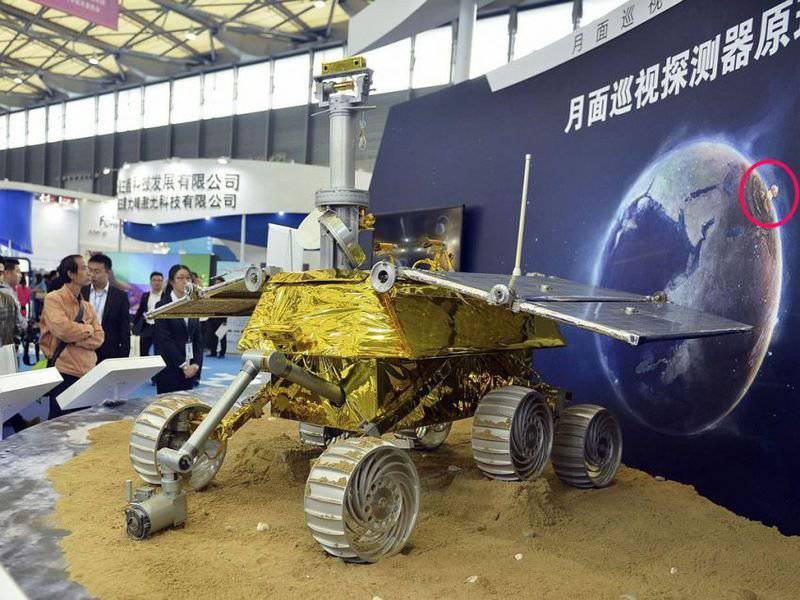
Chinese lunar rover "Jade hare"
India launched its first probe to mars
The launch vehicle PSLV-C25, which carried the first probe in the history of India for Mars exploration, was successfully launched from the Shriharikot cosmodrome 5 November 2013. The research module "Mangalyan" contains a number of scientific instruments: a pressure analyzer, a probe for detecting methane, a spectrometer and a color camera. After 43 minutes after launch, the Martian probe separated from the rocket and went into Earth orbit. 30 November 2013, he began his long journey to the red planet. According to the Indian Space Research Organization, having covered hundreds of millions of kilometers, the Indian probe will reach Mars, approximately this will happen in September 2014 of the year. In September, the probe should reach the Martian elliptical orbit with the nearest point located at an altitude of 500 km from the surface. The mass of the scientific probe is 1350 kg, and its estimated cost 24 million dollars.
The main goal of this Martian mission is to test technologies that are necessary for “designing, managing, planning and conducting interplanetary missions”, as well as the study of Mars, its atmosphere, mineralogy, the search for traces of methane and signs of life. The mission pursues both scientific and technological goals. One of the objectives of this program is to demonstrate to the world that the Indian space program is on the rise and is not lagging behind global trends. The lifetime of the Martian probe will be from 6 to 10 months.
Mars One Project: One-Way Flight
Mars One is a private project headed by Bas Landdorp, it involves a flight to Mars, followed by a base on the surface of the planet of the colony and the broadcast of everything that happens on TV. This project was supported by the Nobel Prize in Physics (1999) Gerard Hooft. According to the project manager, this will be one of the biggest events in the history of mankind. This is the largest media event that is much more important than landing a man on the moon or the Olympic Games.
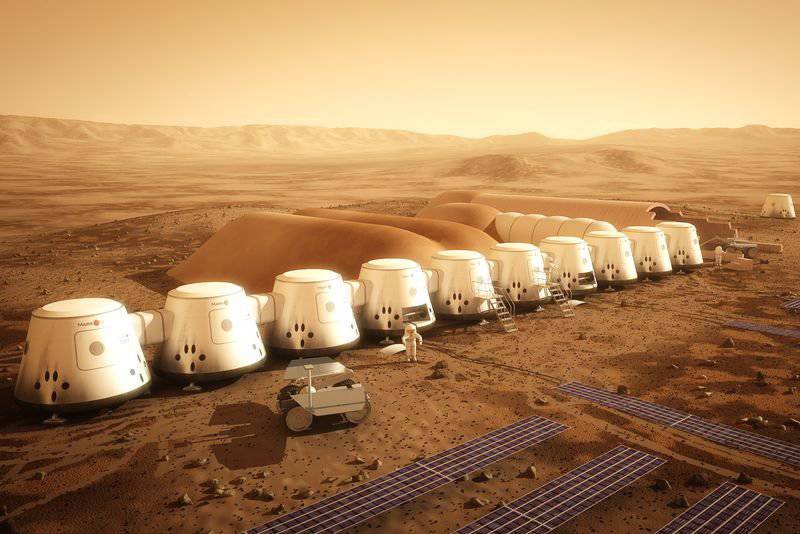
Mars One Mars Project
The Mars One project, which invites everyone to make an irrevocable expedition to Mars, is gaining momentum. Currently, the acceptance of online applications from potential colonizers of Mars has been completed. In total, more than 200 thousand people from 140 countries of the world ignited this idea. Most of the applications from those wishing to take part in the project came from residents of the United States (24%) and India (10%), the number of applications from Russia was 4%. Now the Mars One project team will have to select the lucky ones who will go to the 2nd round of the program. Earlier, the non-profit organization Mars One has already announced that by 2023 it is going to send a team of 4 people to the red planet, by 2033, 20 people should already live in an earthly colony on Mars. The first colonists will have to live in the settlement, which will be built robots, the return of crews to Earth is not expected.
By July 2015, the organizers of this program plan to select the 24 candidate who will be preparing for the next flight in the 7 team for the next 4 years. It is assumed that the first expedition to Mars will cost 6 billion dollars, the next will cost 4 billion dollars each. The organizers expect to finance the work of the program through the sale of television rights to broadcast this very unusual "reality show", which will begin at the stage of selecting participants in a flight to Mars.
The first Martian manned ship in the history of mankind that will send Mars One members to Mars is likely to be developed by Thales Alenia Space, a European company. To launch a manned spacecraft into orbit, it is planned to use the Falcon Heavy launch vehicle, which is currently being created by the US company SpaceX.
Information sources:
http://ria.ru/space/20131216/984313932.html
http://ria.ru/sochi2014_torchrelay/20131110/975783588.html
http://korrespondent.net/tech/science/1604978-cygnus-sovershaet-pervyj-polet-k-mks
http://rus.apollo.lv/novosti/yuzhnaya-koreya-zapustila-svoi-pervyi-sputnik/551665
http://hi-news.ru/space/kitaj-zapustil-v-kosmos-svoj-pervyj-lunoxod.html
http://www.rg.ru/2013/11/05/zond-site.html
http://ria.ru/science/20130830/959626788.html
Information